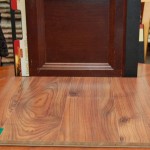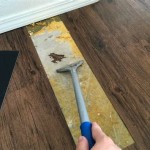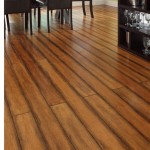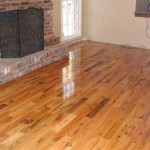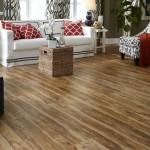Cork Underlayment for Engineered Wood Flooring: A Comprehensive Guide
Cork underlayment acts as a crucial component beneath engineered wood flooring, playing a vital role in several aspects. Its exceptional properties make it an ideal choice for enhancing the performance, longevity, and comfort of your flooring system.
1. Acoustic Insulation: Cork is an excellent acoustic insulator, effectively reducing impact noise and sounds transmitted through the floor. It absorbs vibrations and dissipates sound waves, creating a quieter and more comfortable living environment.
2. Moisture Protection: Cork's natural water-repellent properties help protect the engineered wood flooring from moisture damage. It provides a barrier against humidity and prevents moisture from penetrating the flooring planks, extending their lifespan.
3. Thermal Insulation: Cork's insulating qualities help regulate temperature and improve energy efficiency. It insulates against cold air, making the floor warmer and more comfortable, especially during winter months.
4. Leveling Uneven Subfloors: Cork underlayment can compensate for uneven subfloors, providing a smooth and stable foundation for the engineered wood flooring. It fills in gaps and corrects minor imperfections, ensuring a level and seamless installation.
5. Shock Absorption and Comfort: Cork's compressible nature cushions the floor, absorbing shock and providing a resilient underfoot feel. It enhances walking comfort, reduces fatigue, and prevents wear and tear on the flooring.
6. Environmental Sustainability: Cork is a renewable and sustainable resource harvested from cork oak trees. Its use as an underlayment promotes sustainable practices and reduces environmental impact.
When choosing cork underlayment, consider the thickness and density. Thicker underlayment provides better acoustic and thermal insulation, while higher density offers increased durability and support. Opt for high-quality cork underlayment certified by reputable organizations to ensure optimal performance.
Installing cork underlayment is a relatively straightforward process. Start by preparing the subfloor, ensuring it is clean, dry, and level. Roll out the underlayment according to the manufacturer's instructions, overlapping the joints to prevent moisture penetration. Secure the underlayment with tape or staples to prevent shifting during installation.
By incorporating cork underlayment beneath your engineered wood flooring, you can reap a multitude of benefits, including improved acoustic insulation, moisture protection, thermal insulation, leveling, shock absorption, comfort, and environmental sustainability. Enhance the performance, longevity, and comfort of your flooring system with the exceptional qualities of cork underlayment.

Qep 200 Sq Ft 4 Wide X 50 Long 6mm Thick Natural Cork Sound Dampening Underlayment Roll 72000q The Home Depot

Eco Cork Foam 75 Sq Ft 3 X 25 2 Mm Waterproof Premium Plus 10 In 1 Underlayment Vinyl Plank Laminate Engineered Wood 220000503 The Home Depot

Underlayment Buyer S Guide

Acousticork R60 Cork Underlayment Rolls And S130 Underlay Planks Meets Building Code Inium Association Requirements Pick Up In Los Angeles

Qep 200 Sq Ft 4 Wide X 50 Long 6mm Thick Natural Cork Sound Dampening Underlayment Roll 72000q The Home Depot

Eco Cork Foam 75 Sq Ft 3 X 25 2 Mm Waterproof Premium Plus 10 In 1 Underlayment Vinyl Plank Laminate Engineered Wood 220000503 The Home Depot

Cork Underlayment Wecork

Eco Cork Foam 300 Sq Ft 3 X 100 X3 2mm Waterproof Premium Plus 10 In 1 Underlayment Vinyl Plank Laminate Engineered Wood 2200000227 The Home Depot

1 2 Acousticork Underlayment Acoustic Cork Sound Proofing Isolation S130 Acousti Stamped Acoustical

Cork Underlayment 1 2 12mm 102 Sq Ft Box Fund12 Icork Floor

